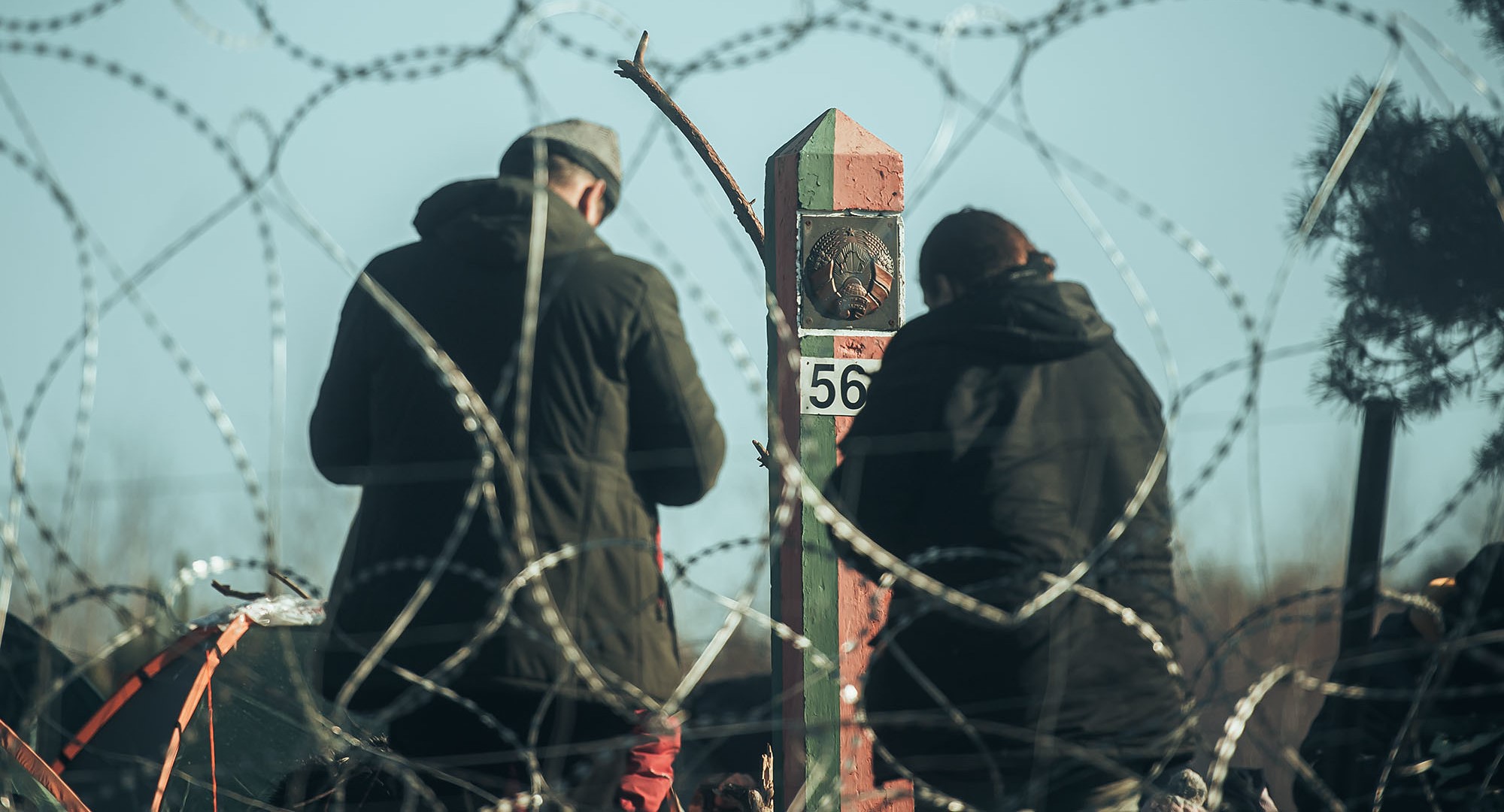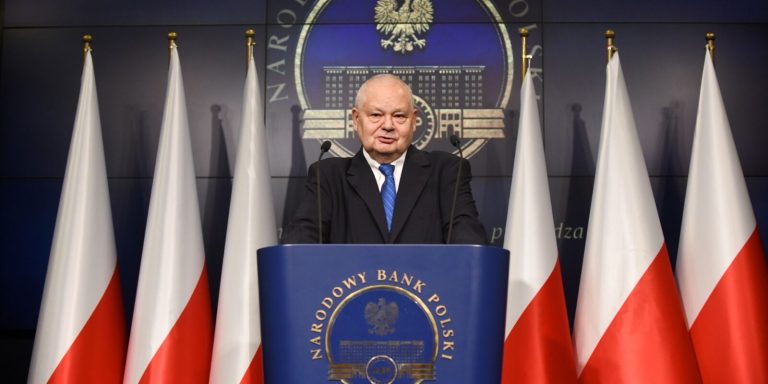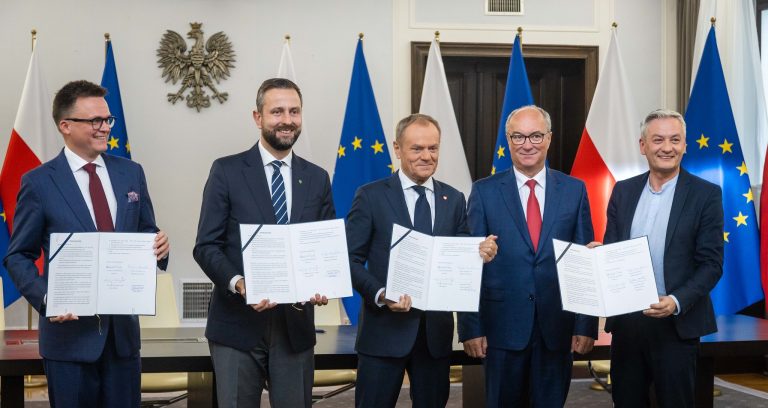Polish border guard report shows scale of migrant pressure from Belarus

An internal document from Poland’s border guard has highlighted the scale of attempted crossings by migrants and asylum seekers – mostly from the Middle East and Africa – into Poland, Lithuania and Latvia from Belarus, as well as how many then travel on to Germany.
The figures show that over twice as many migrants – around 18,000 – were detected by the authorities in Poland in 2023 than in the same period of 2022. The figure also rose on Latvia’s border with Belarus though fell in Lithuania.
Since 2021, the Belarusian authorities have been encouraging and helping migrants to cross the border, in what the EU has described as a “hybrid attack”.
The Polish government plans to further boost troop numbers on the Belarus border amid a surge in the number of migrants attempting to cross.
Minsk also announced today that it is launching military exercises near the border with Poland https://t.co/ur7QJ0X0oI
— Notes from Poland 🇵🇱 (@notesfrompoland) August 7, 2023
The latest figures come from a Polish border guard report that covers the period from 1 January to 17 September 2023. It content was first revealed by Gazeta Wyborcza, a leading Polish daily, on 29 September and the newspaper has now published scans of the document.
The data show that, over that period of eight and a half months, Poland recorded 17,868 attempted or successful irregular crossings at its border with Belarus, which was more than double the figure of 8,299 recorded in the same period of 2022.
The 2023 figures were made up of 16,281 people who were recorded as having been prevented from crossing (zapobieżenia), 380 who were detained (zatrzymania), and 1,207 “against whom decisions were issued to leave the territory of Poland” (wydano postanowienia o opuszczeniu terytorium RP).
The first two numbers were both higher than those in 2022 – which were 5,967 and 327 respectively – while the latter was lower than the 2,005 recorded in 2022.
Among the 380 detained in 2023, the largest group were citizens of Afghanistan (78), followed by Syria (69), Somalia (33), Iran (24), India (24), Yemen (19) and Iraq (16). Among the 1,207 who received decisions to leave Poland, a third (418) were citizens of Syria, followed by Afghanistan (347) and Yemen (89).
The data also give a sense of how many migrants were able to travel through Poland undetected until reaching Germany.
In the same 1 January to 17 September period, 499 migrants who had crossed from Belarus were caught at the Polish-German border by border guards on both sides. That was up from 248 in the same period a year earlier.
A further 22,902 migrants were detained inside Germany near the Polish border. It was established that at least 12,971 of them were likely to have entered the EU from Belarus or Russia. The largest numbers were from Syria (10,176), Afghanistan (3,968) and Turkey (892).
The speaker of parliament has faced criticism after posing for a photo at a Christmas event he hosted with people who entered Poland over the border with Belarus.
„This is an invitation to illegally cross the Polish border,” said an opposition politician https://t.co/W2sl1SDaxD
— Notes from Poland 🇵🇱 (@notesfrompoland) December 23, 2023
The data in the Polish border guard’s report also show that, between 1 January and 17 September, 1,670 people were detained at or prevented from crossing Lithuania’s border with Belarus (down from 7,252 in the same period of 2022) and 8,741 on Latvia’s border with Belarus (up from 3,189 in 2022).
A further 644 people were stopped at Poland’s border with Lithuania after previously crossing from Belarus
Gazeta Wyborcza argues that the report shows that the anti-migrant barrier – made up of physical steel fencing and electronic surveillance systems – built by Poland’s former Law and Justice (PiS) government on the Belarus border is “leaky”.
However, the Polish border guard, in a statement issued in response to the newspaper’s original reporting of the leaked document in September, said that it actually shows the “barrier works flawlessly” by detecting and preventing crossings.
A group of Syrian and Iraqi asylum seekers – many of them children – are “trapped” on the Polish-Belarusian border, having faced violence in Belarus but unable to enter Poland, according to activists.
Poland’s human rights office has visited the group https://t.co/S0b9NqxEbd
— Notes from Poland 🇵🇱 (@notesfrompoland) May 29, 2023
Amid a growing number of migrants and asylum seekers entering Germany via Poland and the Czech Republic, in September 2023 Berlin announced that it was introducing checks on its borders with those two countries. Those measures remain in place.
That prompted a domino effect of other countries introducing such checks along the so-called “Balkan route” – separate from the Belarusian route – that some migrants use to reach Germany. That included Poland implementing controls on its border with Slovakia in October.
Notes from Poland is run by a small editorial team and published by an independent, non-profit foundation that is funded through donations from our readers. We cannot do what we do without your support.
Main image credit:

Daniel Tilles is editor-in-chief of Notes from Poland. He has written on Polish affairs for a wide range of publications, including Foreign Policy, POLITICO Europe, EUobserver and Dziennik Gazeta Prawna.






